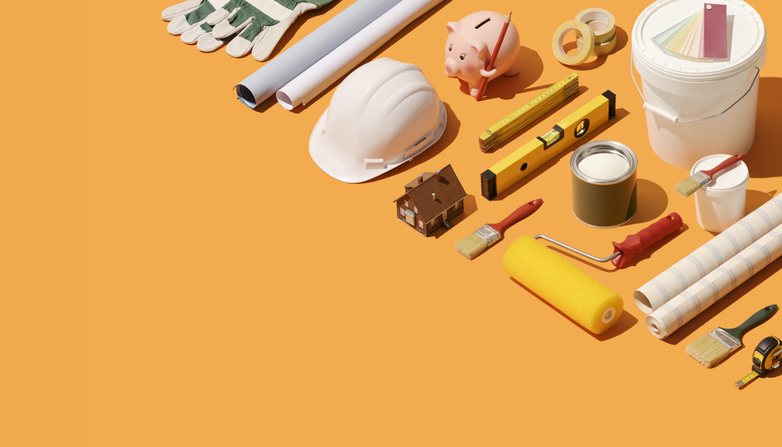Keeping your roof in good condition is essential to protecting your home and ensuring its longevity. Regular roofing repair and care can help prevent costly repairs down the line. Hiring a professional roof expert is the best way to ensure your roof stays in top shape.
Additionally, being proactive about roof replacement, rather than just repairs, can be a game-changer in ensuring the longevity and safety of your home, often proving to be a more economical choice over time.
Here, we answer these questions and get expert advice on constructing and maintaining the perfect roof. Learn about various techniques for creating a strong, durable, attractive roof that will last for years.
The importance of roof maintenance
Why should you care so much about your roof? The maintenance and upkeep of your roof significantly impact your home insurance. Insurance companies often consider the condition of your roof when determining coverage and premium rates. A well-maintained and properly cared-for roof demonstrates your commitment to minimizing the risk of damage and potential insurance claims.
Regular maintenance, such as inspecting for leaks, repairing damaged shingles, and clearing debris, can help prevent larger issues from arising. By addressing these concerns proactively, you reduce the likelihood of water damage, mold growth, or structural issues, which are common causes of insurance claims. Insurance providers typically reward homeowners who maintain their roofs by offering more favorable coverage terms and premium rates.
On the other hand, a neglected or poorly maintained roof poses a higher risk of potential damage and insurance claims. If an insurer deems your roof in a state of disrepair or neglect, they may impose coverage limitations, exclude specific perils related to roof damage, or even deny coverage altogether. In some cases, insurers may require repairs or replacements to be made before issuing or renewing a policy. Therefore, regular roof maintenance not only protects your home but also helps maintain a positive relationship with your insurance provider, ensuring comprehensive coverage and reasonable premiums.
What the experts say
How can you determine how long your roof will last and when is it time to replace it?
How long your roof lasts depends on the materials used and the quality of those materials. At Restoration Roofing, we install architectural asphalt shingles that have an average lifespan of 20-25 years. If your roof is starting to show signs of aging or storm damage, then it’s time to consider a replacement. Signs of aging include sagging in valleys, missing or damaged shingles, leaks, and excessive granule loss. Storm damage can come through at any time but if your roof suffers severe damage then it’s best to replace your roof rather than repair it. If you are unsure whether a roof needs to be repaired or replaced, it’s always a good idea to get a professional roofing contractor to inspect it.
Krista Martin from Restoration Roofing
What are the best eco-friendly roofing materials and where to find them?
Nowadays, eco-friendly roofing is a mixture of traditional techniques and newer options brought about by technological advancements. For example, clay tiles have been used as a roofing material for centuries and there are several companies you can find online that offer a wide variety of styles and colors. On the other side of the spectrum, roofing made from manmade materials like vinyl or steel may not seem very green at first glance. However, some brands are trying to change this by creating new roofing products made from recycled materials. No matter which route you choose to go, make sure to verify a manufacturer’s sustainability claims before purchasing their roofing product.
Larissa Swayze from Of Houses and Trees
How to best prepare the house for the roofing installation/repair day?
- Protect or move any plants or outside furniture from the construction area
- Make sure your driveway is clear
- Mow your lawn very short of picking up nails more easier
- Have water and electricity available if needed
- Let your neighbors know there will be a project going on
- Confirm with your roofing company the location of materials and dumpsters
- Spend the day away from home- roof replacement is very noisy and disruptive
- Ensure all kids and pets are safely contained and not in the construction zone.
- Be readily available for any last-minute communication about your project
- Cookies and lemonade/Gatorade/water are always welcome.
Tracy from Iron River Construction
What are the benefits of access doors installed on your residential/commercial roof?
Access doors on a residential or commercial roof can provide several benefits, including:
- Maintenance and repairs: Access doors provide a convenient point of entry for maintenance and repair work, reducing the need for roof penetration and minimizing the risk of roof damage.
- Safety: Access doors allow roofing professionals to safely access the roof for maintenance, inspections, and repairs, reducing the risk of falls and other accidents.
- Energy efficiency: Access doors can be used to provide access to attic spaces, enabling you to add insulation, ventilation, and other energy-saving measures to your home or building.
- Aesthetics: Access doors can be designed to match the style of your roof and building, blending seamlessly into the overall design and enhancing the appearance of your property.
- Security: Access doors can be locked to prevent unauthorized access to the roof, ensuring the safety of your property and its contents.
Consider installing access doors to improve the functionality, safety, energy efficiency, and appearance of your property. It is a smart investment that can provide long-term benefits and peace of mind.
Chris Jackson from Best Access Doors
What are some pros and cons of DIY roofing installation?
In every trade, there are DIYers. We run across them every day in our industry. When the price is something that cannot be overcome, homeowners seek to do projects themselves or seek counsel from friends or family who are DIYers. Though this has many cons, let’s start with the pros. You can’t be taken advantage of if you do a project yourself, which many may see as the biggest reason to do things themselves. You can also control the start date. Many customers we do business with a state that they have worked with contractors who don’t show up, even when deposits are paid. The last pro I’ll mention is that it means knowing what materials you will use. Our customers often complain that when they receive estimates from other contractors, they have no clue what is being used on their roofs. As a homeowner, I would want to know that so I know I am getting good quality products in my home.
Now for the cons. Though this would be a long list, I will only list one.
Knowledge
DIYers typically lack the knowledge and skill to do even simple repairs. Worse, they cannot know what material to buy to do the job correctly. Some examples are repairs using products like Flex Seal and other products like this. They all make big promises, but these products rarely perform as intended or advertised, leaving homeowners with more problems than they started. DIYers typically don’t understand how roofing systems are put together, mainly asphalt shingle installations. Shingle manufacturers have gone to great lengths to create a family of products that work well together. Too often, I see roofs installed by “chuck in a truck” DIYers with an array of cheaply manufactured products from all over the place, namely big box home improvement stores. The risk of premature failure and leaks is incredibly high by performing repairs and roof replacements without the proper knowledge or training. The adage goes, “If you think hiring a professional is expensive, wait until you hire an amateur.” This saying is relevant to amateur roofing companies and DIYers because it means unless you get the job done correctly, you will most likely have to do the job again, making it more expensive than just hiring a professional in the first place.
Michael Warren from Louisiana Roof Crafters LLC.
How to detect that your roof has been damaged by water/stormwater?
When it comes to post-storm roof damage, some signs are glaring, while others aren’t as obvious. Pay attention to visible damage to your shingles as well as potential gutter issues. However, also inspect your roof for seemingly insignificant cracks, dents, and scratches, which can develop into more serious problems. Finally, inspect the interior of your home, mainly your attic, for peeling paint, attic moisture, and warped rafters.
Eric Lopez from 619 Roofing
What are the most common dangers of not maintaining your roof?
The most common dangers of not maintaining your roof include leaks, structural damage, mold growth, and pest infestations. Leaks can cause water damage to both the interior and exterior of your house, weakening its structural integrity. Mold can grow on wet surfaces, causing health problems for your family. And pests like squirrels and rats can gain entry through small holes in the roof, exacerbating all of these issues.
Dec Wenceslao from IBEX Roof
What are some benefits of loft insulation?
In the simplest of terms, loft insulation works like a woolly hat for your house, keeping the warm air in so you need less energy to heat it.
Loft insulation has many benefits, some of which are highlighted below.
- Easy To Fit
Loft insulation is one of the easiest energy-saving measures a home can implement. It generally comes in rolls and is easily available from DIY superstores or builders merchants. To install loft insulation you have to roll it out in the loft space, making it an easy DIY project.
- Reduces Heat Loss
According to the Energy Saving Trust, a quarter of an uninsulated homes heat is lost through its roof. Insulating your loft aims to minimize this heat loss by creating a thermal barrier, preventing heat from rising and disappearing through your roof. By installing loft insulation, you can expect a 25% reduction in heat loss. This will ensure that your home will be warmer in the winter and cooler in the summer.
- Reduces Bills
Loft insulation can help you save up to £110 each year on a consistent basis. This directly applies to your energy bills. And with loft insulation having a life span of over 40 years, it will pay for itself many times over. In addition, keep in mind that you can get a government or energy company grant that can significantly reduce the cost of installing loft insulation; in some cases, this may cover the full cost of the project.
- More Environmentally-Friendly
One of the great perks of cutting down on your energy use is the reduction of carbon dioxide. In short, your home’s carbon footprint will be greatly reduced, making your home much more environmentally-friendly than it was before. The Energy Saving Trust suggests this can be between 550 kg and 1030Kg of Carbon Dioxide savings each year, depending on the size and construction of the house.
- Reduces Noise
Loft insulation can provide some relief from noise pollution and reduce the amount of noise that makes it into your home. Once your loft is properly insulated, you should be able to notice a reduction in the outside noise, especially when it comes to the upstairs floor of your house.
- Increases Your Home’s Value
An automatic benefit of loft insulation is a higher rating for your home’s Energy Performance Certificate (EPC). Having a higher rating will help improve your home’s value and saleability.
Matthew Driver from Loft Leg
How can you make your home quieter and save energy by insulating your roof and ceiling?
One simple, cost-effective way to both make your home quieter and also save energy is by adding quality insulation, like Quiet Tech, to the interior of your roof and ceiling.
This Eco-friendly product, made from recycled carpet and fabric, works as an acoustic and thermal insulator for interior walls & partitions. When properly installed Quiet-Tech serves as a barrier in your home by limiting exterior noise from entering and preventing hot or cold air from escaping.
Quiet-Tech Insulation is nontoxic and friendly to breath and touch as opposed to many other types of fiberglass insulation.
Carl Trezza from Carpet Cycle
How does proper gutter maintenance contribute to the overall health and longevity of a building?
Properly maintained gutters and downspouts safely carry rainwater away from a home or building, where it can do no harm. It is widely known that if you want anything to last its full lifespan, you must protect it from the weather. Properly flowing gutters are absolutely essential to the longevity of many expensive features such as windows, siding, trim, moldings, foundations, and even the paint job. Conversely, clogged gutters cause overflow and splashing and can even cause immediate damage. A building’s exterior features simply do not last as long, if they are being weathered at an increased frequency. Expensive repairs become necessary if overly frequent wetness begins the process of bug infestation, leakage, rotted wood, soil erosion, undermined foundation, and general moisture damage. If left unchecked, rotted features and moisture issues can even negatively affect indoor air quality. The longevity of each of a building’s features is directly proportional to how well it is protected from the weather. Assuring that gutters and downspouts are flowing properly, pays huge dividends back to the owner in the way of greatly decreased repair and replacement costs as well as generally dryer more enjoyable conditions. Simply put, clogged gutters can cause very expensive damage, and the health and longevity of a building are maximized by keeping them flowing.
Alex O’Hanley – GutterBrush Leaf Guard
When it comes to roofing repair and maintenance, following expert advice is paramount. Your roof plays a critical role in protecting your home from the elements, and regular maintenance and timely repairs are key to ensuring its longevity and functionality. By conducting regular inspections, addressing issues promptly, hiring professional contractors, and practicing preventive measures, you can safeguard your roof and avoid costly damage down the line. Remember, your roof is an investment in the safety and value of your home, so taking the necessary steps to maintain its health is a wise decision. With proper care and attention, your roof will continue to provide reliable protection for years to come.




